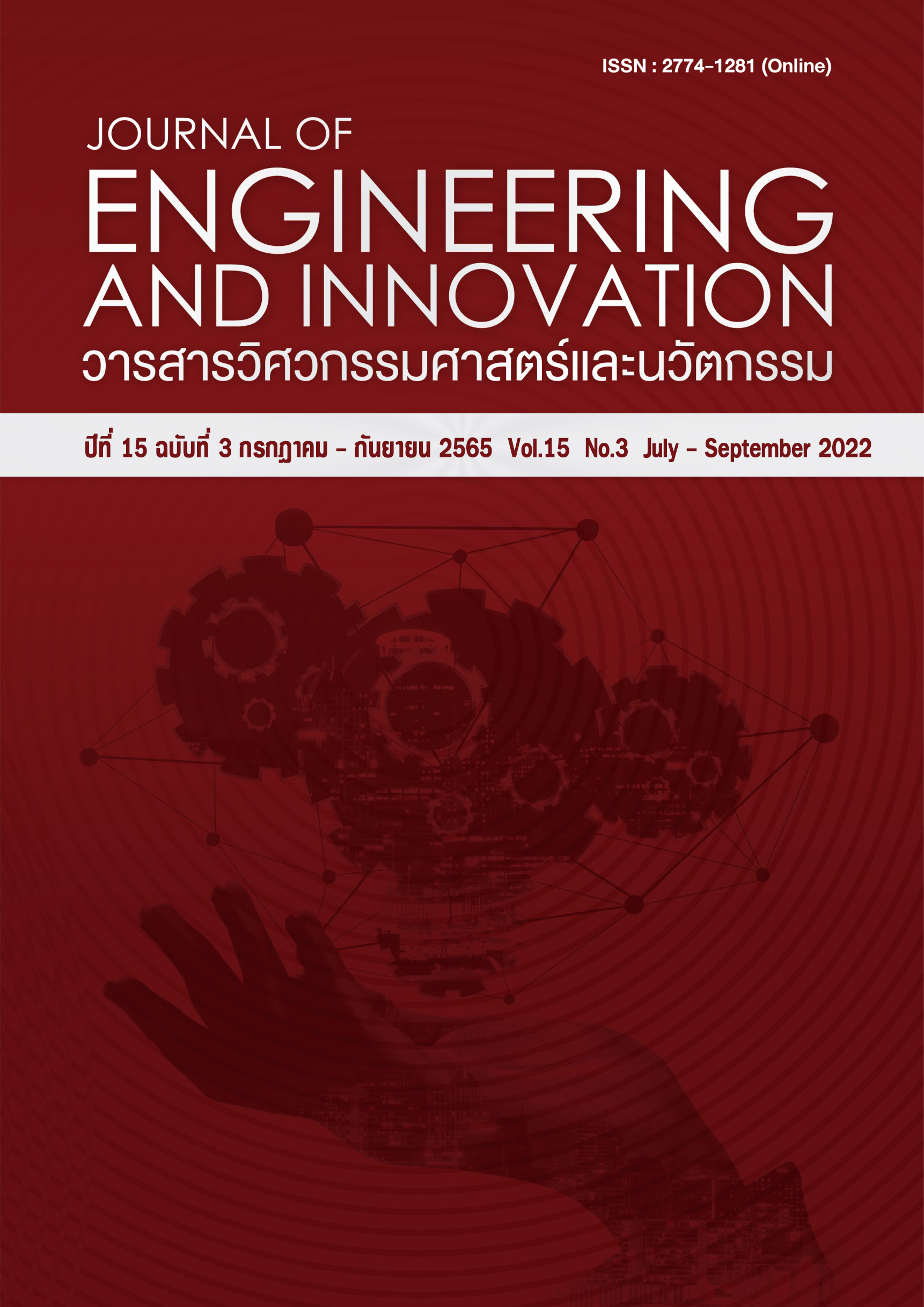An experimental study on the effect of the arc distance of a vortex tube cone valve on cooling efficiency
Main Article Content
Abstract
This study aimed to investigate the cooling efficiency and coefficient of performance of a vortex tube with change in the arc distance of a vortex tube cone valve. A study was performed using the arc distance of vortex tube cone valves at sizes of 0, 1, 2, 3 and 4 mm. The pressure was adjusted at the inlet vortex of 1, 1.5, 2, 2.5, 3, 3.5 and 4 Bar. The experiment used uncontrolled temperature air, air at an ambient temperature of about 33 °C. From the experiment, results showed that an increase in the arc distance on a vortex tube cone valve affects the outlet temperature on both sides. The increased pressure led to a drop in temperature at the cold exit, which was in proportion to the increase in the cooling efficiency and coefficient of performance. At 3 mm, it was the best cooling efficiency and coefficient of performance. The maximum cooling efficiency was 25.2 % and the maximum coefficient of performance was 0.11. At the inlet pressure was 2.5 Bar and the flow rate was 3.5 m3/h. The air outlet has a minimum cold air temperature of 8.9 °C, a drop of 23.4 °C, and a high temperature of 60.3 °C, an increase of 24.4 °C at an inlet pressure of 4 Bar. Inlet air flow rate 6.5 m3/h
Article Details
References
Hilsch R. The use of the expansion of gases in a centrifugal field as cooling process. Review of Scientific Instruments. 1947;18(2):108-13.
Gutak AD. Experimental investigation and industrial application of Ranque-Hilsch vortex tube. International journal of refrigeration. 2015;49:93-8.
Subudhi S, Sen M. Review of Ranque–Hilsch vortex tube experiments using air. Renewable and Sustainable Energy Reviews. 2015;52:172-8.
Kumar RM, Reddy VN, Babu BD. Performance improvement of Ranque-Hilsch vortex tube by using conical hot tube. International Journal of Engineering Research. 2014;3(1):48-51.
R.Madhu Kumar RM, Sudheer N. Performance improvement of Ranque-Hilsch vortex tube by varying inside Surface roughness of hot tube. International Journal of Innovative Science, Engineering & Technology. 2014;1(4):297-301.
Attalla M, Salem M, EL-Wafa AA. An experimental investigation of the optimum geometry for energy separation of the Ranque-Hilsch vortex tube. International Journal of Mechtronics and Mechanical Engineering. 2014;14:31-7.
Markal B, Aydın O, Avcı M. An experimental study on the effect of the valve angle of counter-flow Ranque–Hilsch vortex tubes on thermal energy separation. Experimental Thermal and Fluid Science. 2010;34(7):966-71.
Agrawal N, Naik SS, Gawale YP. Experimental investigation of vortex tube using natural substances. International Communications in Heat and Mass Transfer. 2014;52:51-5.
Rafiee SE, Sadeghiazad MM. Three-dimensional and experimental investigation on the effect of cone length of throttle valve on thermal performance of a vortex tube using k–ε turbulence model. Applied Thermal Engineering. 2014;66:65-74.
Rafiee SE, Sadeghiazad MM. Experimental and 3D CFD investigation on heat transfer and energy separation inside a counter flow vortex tube using different shapes of hot control valves. Applied Thermal Engineering. 2017;110: 648-64.

